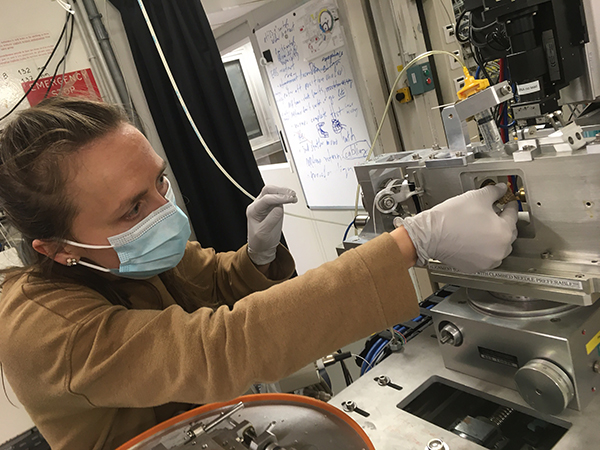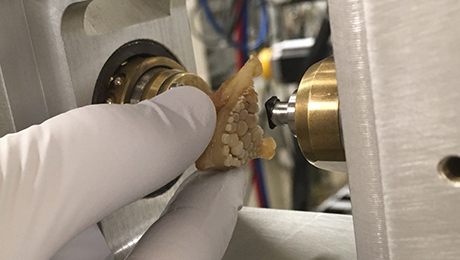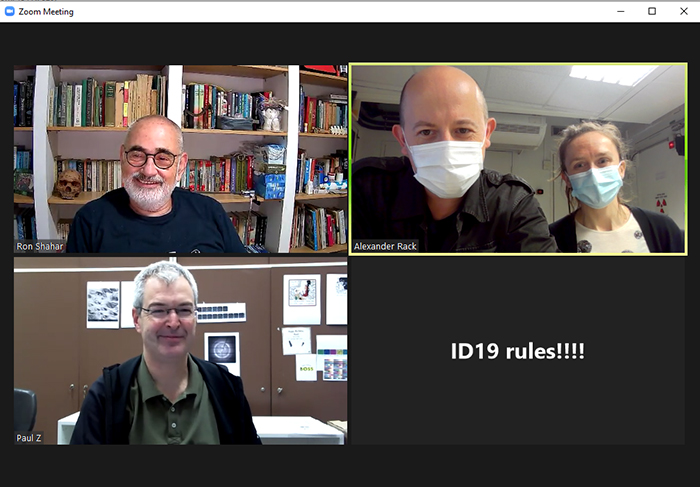- Home
- News
- General News
- #EBSstories Fish,...
#EBSstories Fish, super jaws and rollercoasters on ID19
18-11-2020
An eclectic team of scientists joins forces to find the secrets of a fish with a super strong jaw on ID19.
Black drum is a fish from the United States with one of the strongest bite force in the fish world. It can easily crunch through shells, its main source of food. Weight for weight, it has a bite that is as strong as the bite of a crocodile.
The jaw of this fish has scientists fascinated: it is not made of cortical bone, like most jaws, and it has a 3D arrangement of beams. “This is something never seen before in any other animal. It looks like a sponge… how can such a structure, which seems weak, carry all this load?” queries project leader Ron Shahar, veterinarian and engineer at The Hebrew University of Jerusalem in Israel.
In the quest to find how this structure is built and how it operates, Shahar is joined by Paul Zaslansky, a dentist at the Charité Hospital in Berlin (Germany), as well as physicists Alexander Rack and Marta Majkut at the ESRF.
This week they have been busy on ID19, although Shahar and Zaslansky have been following the experiment remotely, due to COVID19 restrictions. They are carrying out X-ray tomography experiments loading teeth that are still in the jaw of the fish. As Rack explains: “We developed this specific set-up where you can have an object and apply load on it, so in this case, we are replicating what happens when the fish crunches the shells. On ID 19 we had to learn how to use dental crown material to mount the jaws to our loading device. This is a complex experiment because of the in situ set-up, but with the new EBS we are getting lots of really nice data already”.
The team is applying a force of more than 150 Newton, which is equivalent to around 16kg, to the jaw, which belongs to a specimen weighing only 500 grams. The jaw has not broken despite the massive load.
 |
 |
|
Marta Majkut in the experimental hutch. On the right, a detailed view of the set-up with the jaw and all the teeth. Credits: A. Rack. |
|
Zaslansky explains the added value of a beamline like ID19: “Loading of bones with tomography is done all over the world, but ID19 is unique: here we have very high energy and phase contrast, which allows us to handle this complicated porous structure and get great data, without having the bone destroyed, which is a real danger when using radiation. We get the perfect balance on this beamline”. So far, the data looks encouraging and very rich in microscopic, critical details.
“It is the first in situ experiment we are doing with the new EBS, a little more complicated than previous experiments, but it is fun to have people that are so enthusiastic, they motivate us to do our work”, explains Majkut, who is local contact with Rack in the experiment. Shahar has only good words for the ESRF scientists: “In every experiment I do, I am always very impressed by the technical ability of the team at the ESRF and the great technical support we get, and I think it is important to mention it”.
 |
|
|
The team during the experiment: Ron Shahar (top) in Israel, Alexander Rack and Marta Majkut at the ESRF's ID19 beamline and Paul Zaslansky in Germany. |
Being a remote experiment hasn’t meant more relaxation from the users: “There is an emotional layer about this experiment. You wake up in the morning and and hope the night scan went well, then you get depressed because it breaks down, then you get an image and you are happy again… it is an emotional rollercoaster that needs grounding… and that does not change because I am in my office”, explains Zaslansky.
Could any of these results lead to bioinspired materials in the future? “I’ve never seen this particular arrangement anywhere, but we still need to know a lot more about it before we can talk about bioinspiration. Once we have the whole picture, maybe we can inspire new engineering ideas”, concludes Shahar.
Text and video by Montserrat Capellas Espuny
Top image: The jaw of the Black Drum. Credits: R. Shahar.



